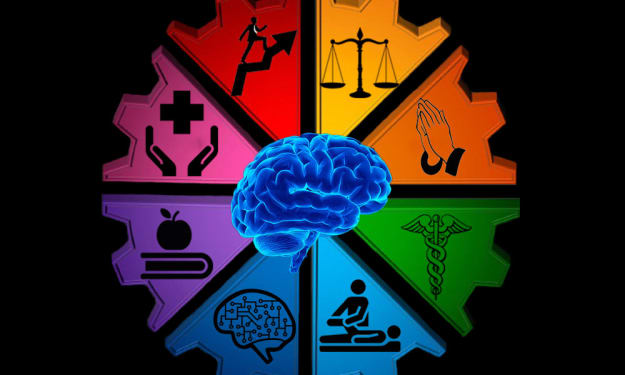Approaches to Social Change
Bottom Up or Top Down

There are two very common approaches to social change bottom-up and top-down. The biggest difference between the two is who starts the programs. Top-down programs have experts, professionals, or elite citizens who form the programs with the best intentions but never really truly understanding just what needs to be done due to a lack of firsthand experience with the intended target of change (Kloos, B., Hill, J., Thomas, E., Wandersman, A., Elias, M. J., and Dalton, J. H., 2012). Bottom-up is the opposite. Bottom-up designs start with people who have experienced or are experiencing the social problems that they seek to change and have an inside look into what needs to be done and the most effective ways to do so (Kloos et al., 2012).
Bottom-up designs start with the very bottom tier of social order. The bottom of the pyramid is where most people who form this kind of approach come from. They are the people who experience the social problems first hand and try to change those (Kloos et al., 2012). An example of bottom-up social change would be a farmer who tries to form a program to raise the price of crops to allow for more income for farmers. Such change is difficult and hard to garner support for but well intentioned and needed due to the experience by the farmer.
On the other hand, top-down change comes right from top experts, professionals in a field or elite citizens in a society (Kloos et al., 2012). They may have excellent data on a particular subject from research or other sources or may even be considered the top authority on the particular problem targeted. However, even with the best intentions, some programs of this design could backfire (Kloos et al., 2012).
An example of top-down social change is the D.A.R.E. program which teaches kids about drug and alcohol abuse and abstaining from it. It was a government funded program and was taught in public schools and was in most cases mandatory for students. It targeted the negative effects of using drugs and alcohol but never really got to the meat of the problem. It targeted the symptoms of the problem, alcohol and drug use, but not the problems such as domestic problems in the home, mental health issues, peer pressure, or anything like that.
Another major comparison between the two different approaches to social change is in the mental health field. Professionals of the mental health field such as Psychologists and Psychiatrists make treatment programs for individuals in need of help and for patients who they are treating. This type of program development is a top-down format (Kloos et al., 2012). On the other hand are self-help groups. Self-help groups are a part of the mental health community that starts with the common everyday person (Kloos et al., 2012). Alcoholics Anonymous is one type of self-help group. The leaders of these groups are usually people who have experienced alcoholism and/or alcohol addiction and now want to help changes the lives of others through a simple program. This type of everyday person is the basis for a bottom-up design (Kloos et al., 2012).
A huge component of top-down social change is its application in politics. Congress and the way they pass laws is they seek out subject matter experts to help them form the basis for a law. Then they take these law ideas and try to pass them through the houses of congress. Every congressman or senator who tries to initiate the passage of a law usually has the best intentions for the consequences of that law. They intend to promote positive social change and hopefully influence the social order in a positive way.
Political change can be helpful as with educational reforms or changes with social class. However it can also be bad. The way top-down change works is that those who are in power or those who control the development of the programs get to influence social change in the way they feel is best. Sometimes this is good and sometimes this is bad. However, political power in the U.S. does not stay constant and it is constantly changing hands. Therefore if the power of one program or entity changes hands then so does the power to cause social change.
Since top-down social change comes from the top then whoever controls the power of the top causes social change. Therefore, different people controlling the power ends up changing the way people want to change social problems. One person may attack the problem in one way and another person may attack the problem in another way that is completely different because they have different viewpoints. This is a potential problem of top-down social change in politics. Ever changing leadership in committees, programs, and social groups cause inconsistencies in the way social change is applied and this is one of the biggest problems of top-down social change in politics.
Overall, both approaches to social change have positive and negative outcomes. Top-down social change has the positive side of having expert data, research, and top authorities in certain fields to help guide and mold the target of whatever social change that people are trying to bring about. On the other hand bottom-up social change has the benefit of having someone in charge who has experienced or is experiencing what they are trying to change and they have firsthand experience with the problem. A negative effect of top-down change is that ever changing leadership and power causes differences in the way change is brought about through differences in programs and order causing things to slip through the cracks. Bottom-up change is negatively impacted on the lack of professional knowledge at the disposal of the leader of the change and the lack of publicity that they have for their programs due to less popular stance in the social order of the society or culture they are in.
References
Kloos, B., Hill, J., Thomas, E., Wandersman, A., Elias, M. J., and Dalton, J. H. (2012). Community psychology: Linking individuals and communities. Belmont, CA: Wadsworth Cengage Learning.
About the Creator
Cobe Wilson
Gamer, writer, poet, academic.
Purchase photography or merchandise here!!! --> https://the-photography-of-cobe-wilson.creator-spring.com/






Comments
There are no comments for this story
Be the first to respond and start the conversation.